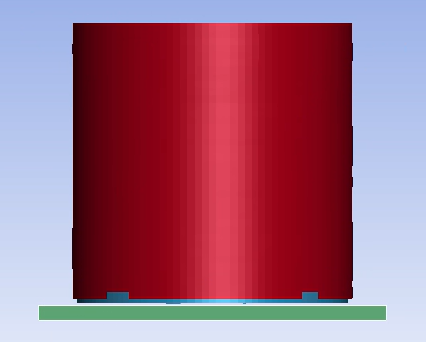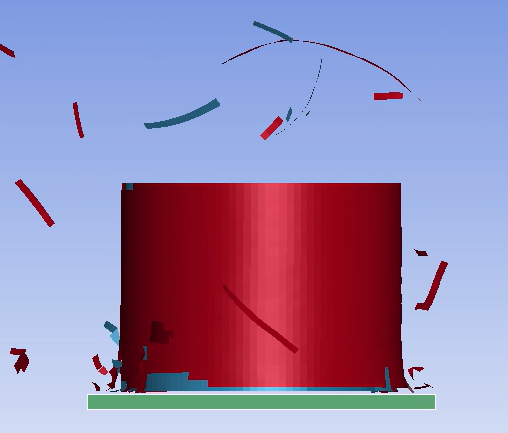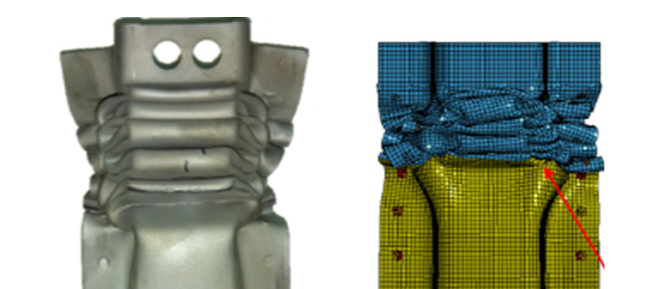-
-
March 27, 2025 at 12:09 pm
12OP12
SubscriberHi, I am trying to reconstruct an impact simulation in LS-DYNA (using LS-PrePost) I found described in a research paper. The simulation looks at the impact behaviour of a tube being axially crushed by a rigid impactor. The tube consists of two shells representing a composite tube. In the paper it is described to constrain the translational degrees of freedom of the bottom nodes of the tube (two shells). However, if I run the simulation the tube is still being pushed in the direction of the moving impactor. I activated the LAMSHT flag in the CONTROL_SHELL card which seemed to help initially, however, after a bit more crushing the tube seems to break free again and move with the impactor. I suspect this to be caused by the fact that only the bottom-most nodes are being fixed, which causes translation of the tube as soon as these nodes break free from the main section of the tube. Still, I don't understand how the paper was able to do this... Is there a setting that might solve this? Also, I have read about using a RIGIDWALL_PLANAR to simulate the boundary condtions, would this work and would it change much of the solution?
Thank you for your help and time.
-
March 27, 2025 at 2:10 pm
Armin Abedini
Ansys EmployeeHi Oliver,
Is your goal to simulate the progressive folding of the tube due to crushing (as shown in the picture below)? I suggest including a small fold initiator (rather than applying constraints on the nodes), as mentioned in this paper: https://iopscience.iop.org/article/10.1088/1757-899X/418/1/012126/meta
Additionally, ensure that the material model accurately represents the behavior of the material, with sufficient ductility to prevent brittle-type fractures. To properly simulate the folds, the material model should be capable of undergoing large plastic strains without significant fracture or element erosion. While some localized fractures in highly deformed areas are acceptable, achieving progressive folding requires the material to exhibit adequate ductility. Check also the paper above and it may give you more insights..-
March 27, 2025 at 2:40 pm
12OP12
SubscriberThank you Armin. The problem is that I am trying to simulate a composite tube (not a plastically deformable material), and therefore it is expected that the material will crush in a brittle way without the damaged parts staying attached to the main body. I assume a rigid wall would be a better way of modelling the constraint, but the paper I am basing my simulation on doesn't do this, so I am trying to understand how.
-
-
- You must be logged in to reply to this topic.



-
3977
-
1461
-
1272
-
1124
-
1021

© 2025 Copyright ANSYS, Inc. All rights reserved.











